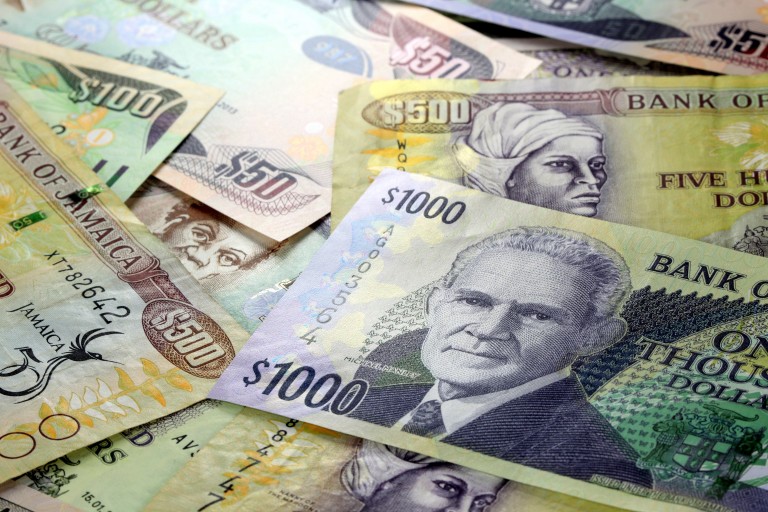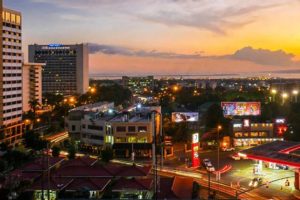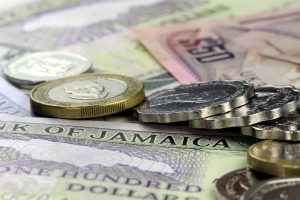Date: August 26, 2019
Mr. Wayne Henry, Director General for PIOJ in his address to the audience, highlighted the 2017 Poverty Overturn in addition to the perspective on the likelihood of a global recession and how it would affect Jamaica.
In regards to Employment Update, the Director General briefly highlighted that for the month of April 2019, “The unemployment rate was 7.8 percent. This was 1.9 percentage points lower than the rate recorded in April 2018. The employed labour force increased by 29 900 persons to 1 244 500 persons relative to April 2018. This represents the highest level of employment ever recorded during a single month. The employed labour force by industry group as at April 2019 revealed 10 of the 16 industry groups recorded higher employment levels.” Moreover, the Country’s real GDP for January to June 2019, “is estimated to have increased by 1.4 percent relative to the corresponding period of the previous year due to estimated growth of 1.6 percent in the Services Industry and 0.8 percent in the Goods Producing Industry. Higher output was estimated for all industries with the exception of Agriculture, Forestry & Fishing. The Industries with the largest increases during the period were: Mining & Quarrying (up 7.7 percent); and Hotels & Restaurants (up 6.5 percent). ”
The Director General also stated in his press briefing the main highlights of the macroeconomic performance for the April to June 2019 quarter. The following was noted:
Overview of Real Industry Developments
- For April to June 2019, real GDP grew by an estimated 1 percent relative to the corresponding quarter of 2018. The Services Industry was estimated to have grown by 1.4 percent while the Goods and producing Industry was estimated to remain unchanged.
- All industries within the Services Industry recorded growth for the period April to June 2019. The industries estimated to have registered the largest growth rates were Hotels & Restaurants (5.6 percent), Finance and Insurance Services(1.8 percent) and Other Services (1.5 percent).
- The Goods Producing Industry’s relative stagnancy was due to the impact of the growth in Mining & Quarrying (up 4.5 percent and Manufacturing (up 1.7 percent) which was partially tempered by the decline in Agriculture, Forestry and Fishing (down 2.5 percent) and Construction (down 0.8 percent).
- For January to June 2019, Real Value Added was estimated to have increased by 1.4 percent. The Goods Producing Industry was estimated to have grown 0.8 percent while the Service’s Industry was estimated to have grown by 1.6 percent. The industries, excluding Agriculture , Forestry and Fishing, that were estimated to have recorded the largest increases in real value added during the first half of 2019 include: Mining & Quarrying (7.7 percent); Hotels and Restaurants (6.5 percent); and Finance and Insurance Services (2.1 percent)
Other Macroeconomic Highlights
- For the reported period (April-June 2019), the Jamaican economy experienced inflation of 0.8 percent, which emanated primarily from an increase in prices for the Food & Non-Alcoholic Beverages division (up 1.1 percent) and Housing, Water, Electricity , Gas and other Fuels (up 0.9 percent). The increases in Food and Non- Alcoholic Beverages was attributable to higher prices in Fruits and Vegetables. Moreover, the rise in prices for Housing, water, electricity, Gas and Other Fuels was due to an uptick in fuel rate and the billing exchange rate of electricity bills.
Production Performance by industry
Real value added for Agriculture, Forestry & Fishing decreased by 2.5 percent. The performance for the quarter was caused by the drought conditions resulting from below average rainfall levels for all parishes. Traditional Export Crops fell 12.5 percent due to lower production of Sugarcane by 36.6 percent. Additionally, the decline was tempered by Animal Farming, which was estimated to have grown due to an increase in broiler meat production.
Real value added for Mining & Quarrying industry grew by 4.5 percent. This up-turn was attributable to higher production in alumina production which increased by 7.5 percent facilitated by an uptick in the alumina capacity utilization rate to 67.8 percent, up 5.3 percentage points relative to the corresponding quarter of 2018. Crude bauxite production reflected a 18.5 percent decline with associated contraction in the crude bauxite utilization rate to 57.8 percent, down 13.1 percentage points.
The Manufacturing industry registered an estimated increase of 1.7 percent. This uptick resulted from increases on Other Manufacturing sub-industry as well as Food, Beverage & Tobacco sub-industry. The primary drivers of the growth in the Other Manufacturing sub-industry were the higher output of Petroleum products including Gasoline (up 135.2 percent), Fuel Oil (up 119 percent) and Turbo Fuel (up 57.6 percent) and the other driver was Non- Metallic Minerals which included an uptick in cement up 11.9 percent and clinker up 17.4 percent. The Food, Beverage & Tobacco sub-industry experienced increased output in Poultry Meat (up 4.2 percent), Bakery Products(up 5.5 percent), Dairy Products (up 48 percent), Edible Fats (up 2.4 percent).
Real value added for the Construction industry fell by 1 percent. The contraction was due to the Other Construction component which offset the growth in building construction component. The contracted performance of the Other Construction component stemmed from the winding-down of several major infrastructural projects and delays in the start-up of new projects scheduled to commence during this year. Furthermore, a decline in expenditure on civil engineering activities were estimated to have decline as expenditure by the National Works Agency (NWA) was down 28.2 percent to $3.6 billion, largely reflecting reduced expenditure for road expansion and rehabilitation works. Additionally, the “Jamaica Public Service (JPS), down 11.0 percent to $2.5 billion, due to reduced expenditure on the power transmission and distribution, with the completion of the JPS 190 megawatt Old Harbour Plant in 2018,” as noted by Mr. Henry. However, growth in the Building Construction component stemmed from an increase in NHT Housing Start, up 38 percent to 999 units and work-in-progress on previously started developments.
Outlook
Furthermore, the PIOJ projects that, “for July to September 2019, growth prospects for the economy are generally positive, based on the anticipated strengthening of the performance of most industries relative to the similar quarter of 2018. Growth is expected to be in the range of 0.5 percent to 1.5 percent.”
The Director General listed the short term expectations which include:
- “Partial recovery from the drought conditions which have negatively impacted performance during April to June 2019
- Continued growth in the Hotels & Restaurants industry facilitated by continued marketing efforts, new flights and increased flight frequency as well as the expanded hotel room stock. Preliminary data indicate that stopover arrivals for the month of July increased by 4.8 percent.
- Higher levels of industrial activity, particularly in the Manufacturing industry, and higher electricity usage during the hot summer months are expected to drive growth in the Electricity & Water Supply industry. Electricity sales for the month of July increased by 3.2 per cent to 298.6 million kilo watt hours. Within the Mining & Quarrying industry, increases were recorded for both Alumina and Crude Bauxite production of 5.6 percent and 8.7 percent respectively, during the month of July.”
He added that, “the primary risks to growth are adverse weather conditions, plant downtime in the industrial sectors and slower than anticipated growth in the global economy.”
Lastly, the concerns of a global recession and its likely impact on the Jamaican economy was discussed. Mr. Henry stated, “These concerns have been heightened by the recent occurrence of inverted yield curves on the US stock market, which have traditionally been a sign of recessions in the past. However, labour market conditions, the other supplementary indicator that is used to predict a recession, do not suggest that a recession is likely to materialize before 2021.” Moreover, “Economic prospects for the current financial year remain positive as global authorities have applied aggressive monetary policies and strategies, where necessary. Further, recessions are marked by periods of negative growth and all projections still indicate that whereas growth has slowed, it remains positive.” However, if a recession was to be realized, then, “the main transmission mechanisms for the global economic crisis on the local economy are through trade impacts and the impact of reduced financial flows, which include loans, investments and remittances.”
Analyst Certification -The views expressed in this research report accurately reflect the personal views of Mayberry Investments Limited Research Department about those issuer (s) or securities as at the date of this report. Each research analyst (s) also certify that no part of their compensation was, is, or will be, directly or indirectly, related to the specific recommendation (s) or view (s) expressed by that research analyst in this research report.
Company Disclosure -The information contained herein has been obtained from sources believed to be reliable, however its accuracy and completeness cannot be guaranteed. You are hereby notified that any disclosure, copying, distribution or taking any action in reliance on the contents of this information is strictly prohibited and may be unlawful. Mayberry may effect transactions or have positions in securities mentioned herein. In addition, employees of Mayberry may have positions and effect transactions in the securities mentioned herein.







